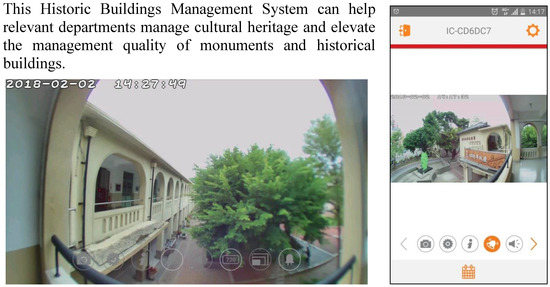The Development of a Digital Management System for Historic Buildings in Taiwan
Abstract
:1. Introduction
1.1. Preservation of Cultural Heritages in Legislation
1.2. Needs for the Digitalization of Cultural Heritages
1.3. Research Motive
1.4. Research Purpose
- A.
- Explore the management of the life cycle (LC) of historic buildings and compile a data list required for each management stage as a basis for the development of digital management tools.
- B.
- Analyze the database architecture required by a historic building management system as well as the attributes of its columns and rows and their relationships for the establishment of a database.
- C.
- Establish a low-cost and low-requirement management system and associated digitalized dynamic management module in a network-attached storage (NAS) platform to improve the management of historic buildings.
2. Methodology
2.1. Literature Review
2.2. Interviews with Administrators
- A.
- Building owners’ willingness to apply for monuments is generally low;
- B.
- The damage to buildings caused by improper use of monumental users and climate change;
- C.
- The construction and repair of historic sites are very extensive, and the management of the project is not easy;
- D.
- The scourge from people, including war, urban development, improper management, etc.;
- E.
- Insufficient management manpower and resources of historic buildings.
2.3. Establishment of the Management System
3. Results
3.1. LC of Cultural Heritage Buildings
3.1.1. Review
3.1.2. Restoration Planning
3.1.3. Construction Management
3.1.4. Operation Management
3.1.5. Revocation and Demolition
3.2. Digitalized Dynamic Management
3.3. Difficulties and Challenges Inherent in Conventional Digitalization and Information Management
- A.
- Hardware
- (a)
- Hardware is costly to manage and must be upgraded after reaching its lifespan, which is also costly.
- (b)
- Data transfer—a necessary stage of updating hardware—entails a high risk of data becoming corrupted or being lost.
- (c)
- Requirements for additional functions or features may be difficult to meet; for example, the functions of monitoring, live streaming, and statistical analysis are relatively costly.
- B.
- Software
- (a)
- The transmission, duplication, editing, and storage of data rely on trained information engineers.
- (b)
- Software supporting specialized management features may be expensive owing to high development costs.
- (c)
- Independent software development is difficult.
- C.
- Other
- (a)
- Information management may require outsourcing if administrators lack expertise in information technologies.
- (b)
- Conventional one-way management systems cannot simultaneously satisfy the needs of all related management levels (central government, city or county government, and subsidiary agencies).
- (c)
- Management system requirements can be extremely complicated owing to the highly diversified management targets (e.g., various types of monuments, personnel, and files).
3.4. System Structure
3.4.1. Hardware Architecture
- A.
- Convenient data sharing, access, and authority management;
- B.
- A higher processing speed, and hardware can be expanded or upgraded based on various management stages or needs;
- C.
- Secure data preservation with multiple backups;
- D.
- Simplified settings and a low technical threshold;
- E.
- Accessible from diverse platforms such as personal computers, smartphones, tablets, and televisions;
- F.
- Convenient data sharing and other convenient features in addition to data storage;
- G.
- Diversified applications such as database management, video streaming, image storage, and website construction.
3.4.2. Features of the Proposed Management System
- A.
- Homepage: user instructions, file download, and video streaming.
- B.
- Application section: Application submission and document upload (ownership certificate and associated documents).
- C.
- Review section: Documents required for application, site visit records and documents, review committee minutes, provisional meeting minutes, and reporting procedures.
- D.
- Design and planning section: Restoration and reuse proposal, review committee minutes, project budget proposal, and design drawings.
- E.
- Construction management section: Construction management plans, construction diaries, construction supervision reports, and progress reports.
- F.
- Operation management section: Routine maintenance and periodic repair plans, reuse operation and management plans, emergency plans, maintenance and management plans, measures against anomalies, disaster prevention plans, insurance policies, maintenance reports, test reports, repair reports, records of major disasters, records of notable events and activities, visitor statistics, purchase contracts, volunteer roster, chronicle of notable events, financial statements, and payment balances.
- G.
- Revocation and demolition section: Architect information, contractor information, site supervisor information, restoration and reuse project director information, construction progress report director information, planning and design director information, site director information, craftsmen information, review committee member information, construction methods, construction materials, volunteer roster, competent authorities, and roster of personnel on duty.
- H.
- General information maintenance section: Architect information, contractor information, site supervisor information, project director information, construction management director information, planning and design director information, site director information, craftsmen information, review committee member information, construction methods, construction materials, volunteer roster, competent authorities, and roster of personnel on duty.
- I.
- Inquiry section: Codes and regulations, personnel information, and application progress. The management system is primarily designed to be used by competent authorities; therefore, general users are only permitted to inquire about the procedure and progress of applications. However, this restriction may be relaxed when necessary.
4. System Development Process and Results
4.1. Hardware Selection
4.2. Operating Interface and Access Settings of the Proposed Management System
4.3. Investigation Management Software
5. Conclusions and Contributions
5.1. Conclusions
- A.
- Convenient: The structure and required functions of the software are developed after interviewing with the historic building management personnel. The software system is developed according to their needs, therefore, which is convenient for their management requirements.
- B.
- Ease of operation: Administrators can perform cloud-based data management through web browsers.
- C.
- User-friendly interface: The interface of the system is also a commonly used window component, which is familiar to the operator, so it is quite easy to get started.
- D.
- Quick data review: During a site visit, administrators can use mobile devices to quickly send investigation data back to the management system through the mobile app for management and storage purposes.
- E.
- Centralized data preservation: The management system can categorize and store surveillance images, digital data (image, text, video, and audio files), investigation reports, and applications for later use.
- F.
- After the system is developed, the maintenance tasks will be transferred to the administration department. By transfer of maintenance documents, no additional cost is required for professional information engineers. Additional hard drives can be purchased if users need to expand storage spaces.
5.2. Contributions
- A.
- This study investigated the processes and problems of contemporary practices for managing historic buildings.
- B.
- This study examined the practices of preserving the digital data of historic buildings and established key management tasks in each stage of such a building’s LC. The various functions of the proposed system can provide guidance for administrators who are unfamiliar with historic buildings.
- C.
- This study established guidelines for the digitalized management of cultural heritages, promoted digitalized management for historic buildings, and developed a management system suitable for city- and county-level agencies. Moreover, the results are expected to be applicable to other types of cultural heritages.
Author Contributions
Funding
Conflicts of Interest
References
- Adu, Kofi Koranteng, and Patrick Ngulube. 2016. Preserving the digital heritage of public institutions in Ghana in the wake of electronic government. Library Hi Tech 34: 748–63. [Google Scholar] [CrossRef]
- Arches. 2018. Available online: https://www.archesproject.org/ (accessed on 10 July 2018).
- Bruno, Nazarena, and Riccardo Roncella. 2018. A restoration oriented HBIM system for cultural heritage documentation: The case study of Parma cathedral International Archives of the Photogrammetry. Remote Sensing and Spatial Information Sciences ISPRS Archives 42: 171–78. [Google Scholar]
- Cultural Heritage Preservation Act. 1997. Laws & Regulations Database of The Republic of China. Available online: http://law.moj.gov.tw/ (accessed on 28 May 2018).
- Historic England. 2018. Building Materials for Historic Buildings. Available online: https://historicengland.org.uk/advice/technical-advice/buildings/building-materials-for-historic-buildings/ (accessed on 10 July 2018).
- Jang, Minyoung, Sung-Hyun Park, and Myeong-Hun Lee. 2017. Conservation management of historical assets through community involvement a case study of Kanazawa Machiya in Japan. Journal of Asian Architecture and Building Engineering 16: 53–60. [Google Scholar] [CrossRef]
- Jia, Jing, Qiuhong Zheng, Huiying Gao, and Hai Sun. 2017. Research of Ancient Architectures in Jin-Fen Area Based on GIS&BIM Technology. Journal of Physics: Conference Series 842: 012035. [Google Scholar] [Green Version]
- Jung, Fang-Je. 2008. The Timeless Way of Cultural Heritage Management: A Conservation Perspective on Managing Dynamic Change. Ph.D. dissertation, National Cheng Kung University, Tainan, Taiwan; 262p. [Google Scholar]
- Lin, Tai-Yu. 2012. The Design on the Metadata for the Digitization of Historic Building. Master’s dissertation, China University of Technology, Taipei, Taiwan. [Google Scholar]
- Loli, Arian, and Chiara Bertolin. 2018. Towards Zero-Emission Refurbishment of Historic Buildings: A Literature Review. Trondheim: Department of Architecture and Technology, Norwegian University of Science and Technology. [Google Scholar]
- Ma, Gang, and AL Narasimha Reddy. 1998. An evaluation of storage systems based on network-attached disks. Paper presented at International Conference on Parallel Processing (Cat. No. 98EX205), Minneapolis, MN, USA, August 14; pp. 278–85. [Google Scholar]
- Myers, David, Alison Dalgity, and Ioannis Avramides. 2016. The Arches heritage inventory and management system: A platform for the heritage field. Journal of Cultural Heritage Management and Sustainable Development 6: 213–24. [Google Scholar] [CrossRef]
- Ou, Zhonghong, Meina Song, Zhen-Huan Hwang, Antti Ylä-Jääski, Ren Wang, Yong Cui, and Pan Hui. 2018. Is cloud storage ready? Performance comparison of representative IP-based storage systems. Journal of Systems and Software 138: 206–21. [Google Scholar] [CrossRef]
- Pickles, David. 2018. Managing Vacant Historic Buildings. Swindon: English Heritage. [Google Scholar]
- Rebecca, Lane. 2016. Understanding Historic Buildings. Swindon: Historic England. [Google Scholar]
- Saygi, Gamze, Giorgio Agugiaro, and Mine Hamamcioglu-Turan. 2018. Behind the 3D Scene: A GIS Approach for Managing the Chronological Information of Historic Buildings. Multimodal Technologies and Interact 2: 26. [Google Scholar] [CrossRef]
- Steenberghen, Thérese, Marcelo Zúñiga López, Fausto Cardoso Martínez, and Koenraad Van Balen. 2012. An information system for heritage documentation management of Cuenca city, Ecuador. MASKANA 3: 51–61. [Google Scholar]
- Teng, Ching-Lan. 2004. Life-Cycle Based Building Maintenance Management System. Master’s dissertation, National Central University, Taoyuan City, Taiwan. [Google Scholar]
- Wang, Siyan, Xun Sun, and Upmanu Lall. 2017. A hierarchical Bayesian regression model for predicting summer residential electricity demand across the U.S.A. Energy 140: 601–11. [Google Scholar] [CrossRef]
- Yang, Sung-An. 2009. The Study on VR Integrate Digital Database System for Preservation of Architectural and Cultural Property. Master’s dissertation, Shu-Te University, Kaohsiung, Taiwan. [Google Scholar]
- Yang, Won-Bing, Cheng Hong-Ming, Yu Jeng-Sheng, Chen Ming-Bin, Chen Chang-Liang, and Yen Ya-Ling. 2007. A Preliminary Study on the Application of Digitalization in the Preservation of Cultural Heritages. Paper presented at the Digital Archives Conference on Workflows & Quality Management, Taipei, Taiwan, November 15. [Google Scholar]
- Zhang, Limao, Xianguo Wu, Miroslaw J. Skibniewski, Weili Fang, and Qianli Deng. 2015. Conservation of historical buildings in tunneling environments: Case study of Wuhan metro construction in China. Construction and Building Materials 82: 310–22. [Google Scholar] [CrossRef]
| 1 | http://www.msgt.org.tw/research2.php?Type=15&menu=research2_class&pic_dir_list=1# (accessed on 28 May 2018). |


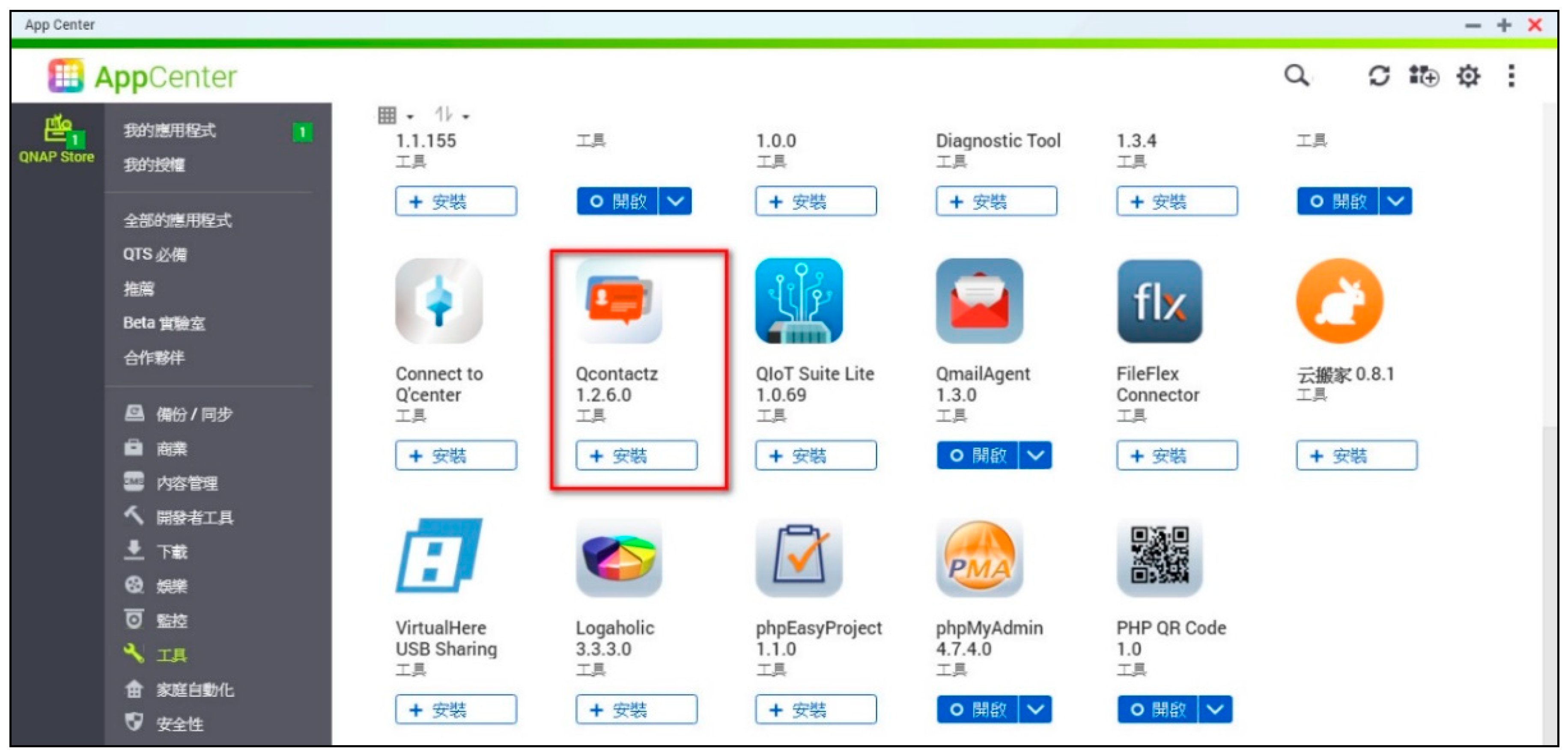


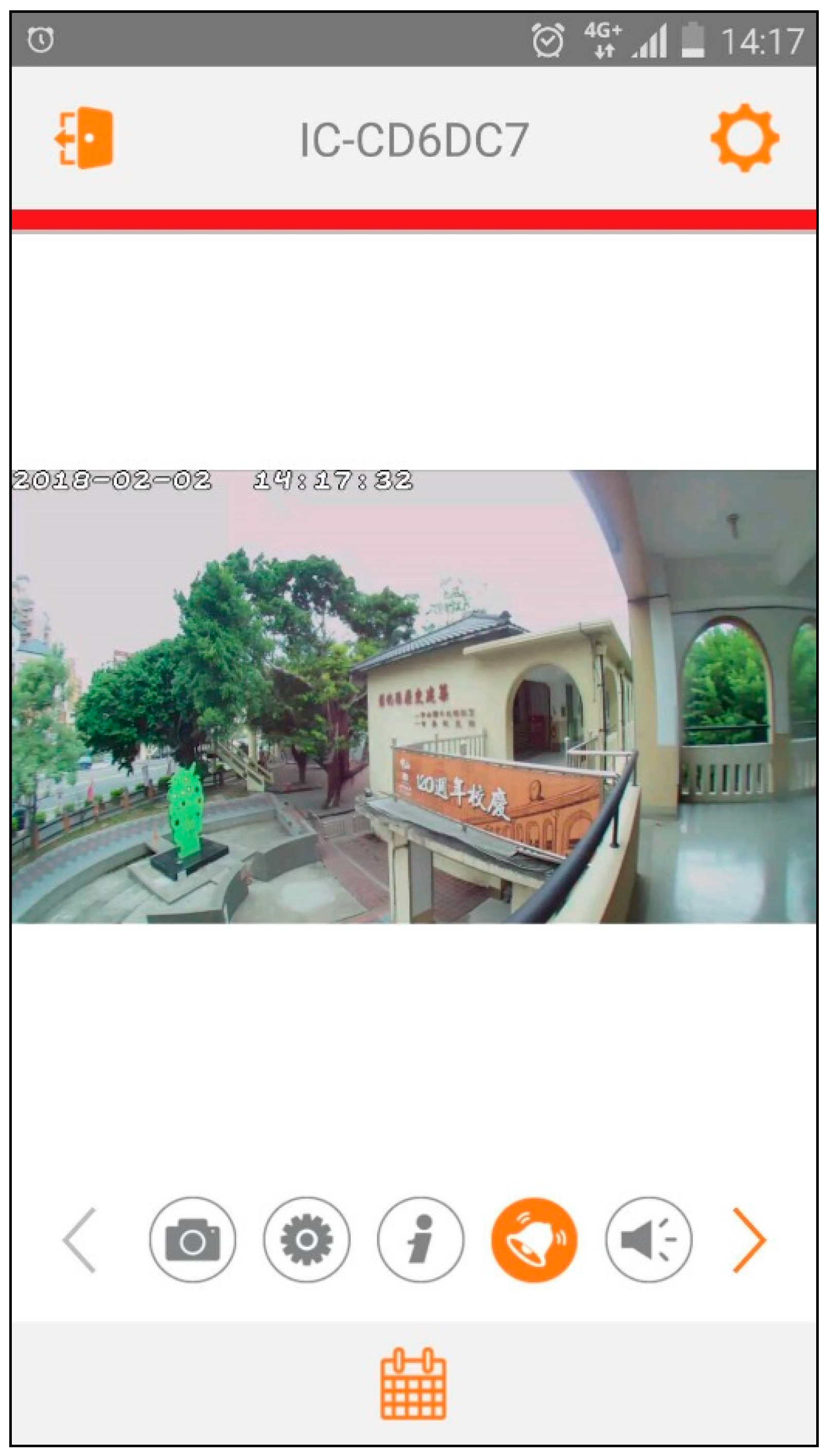

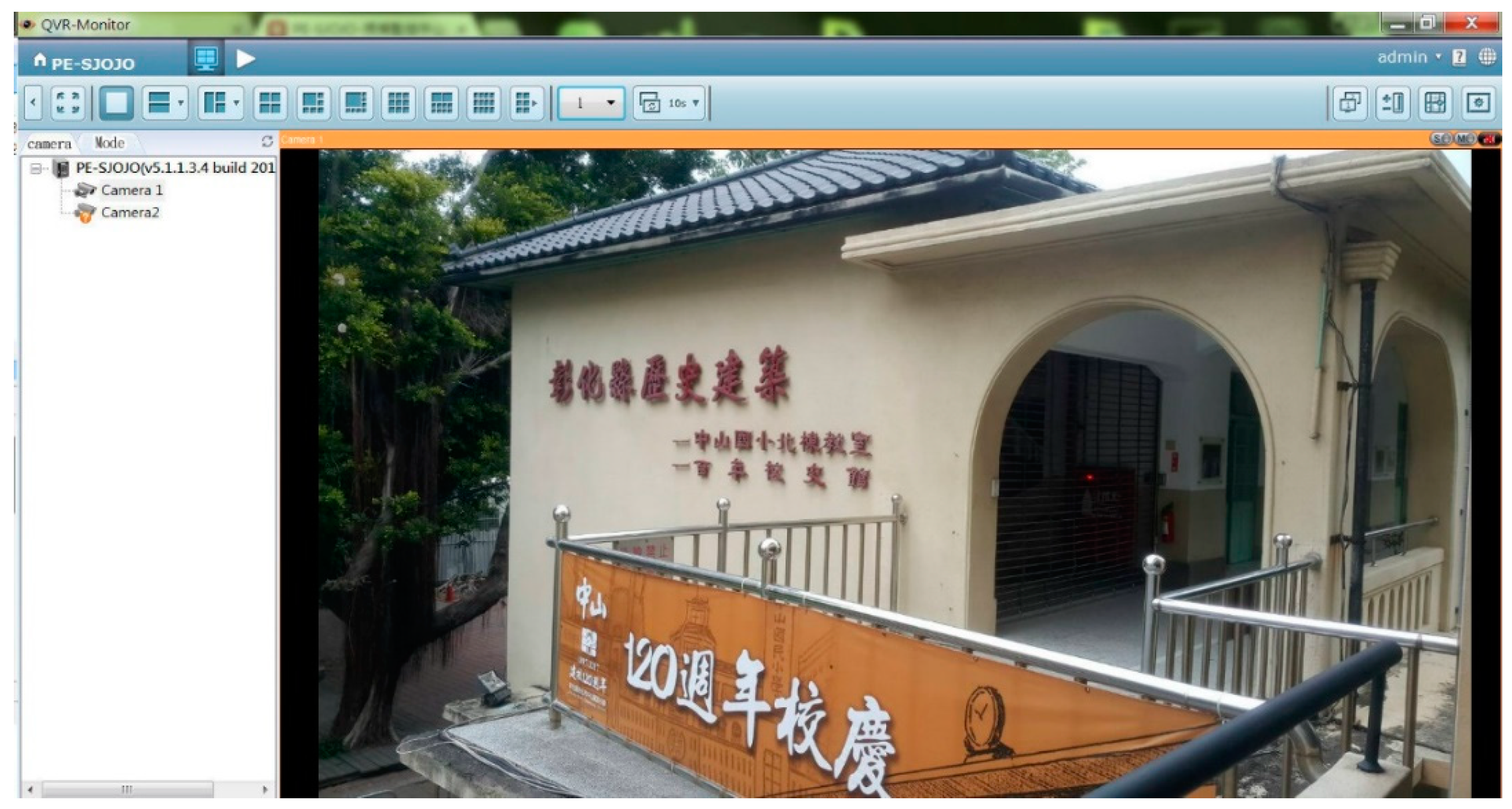
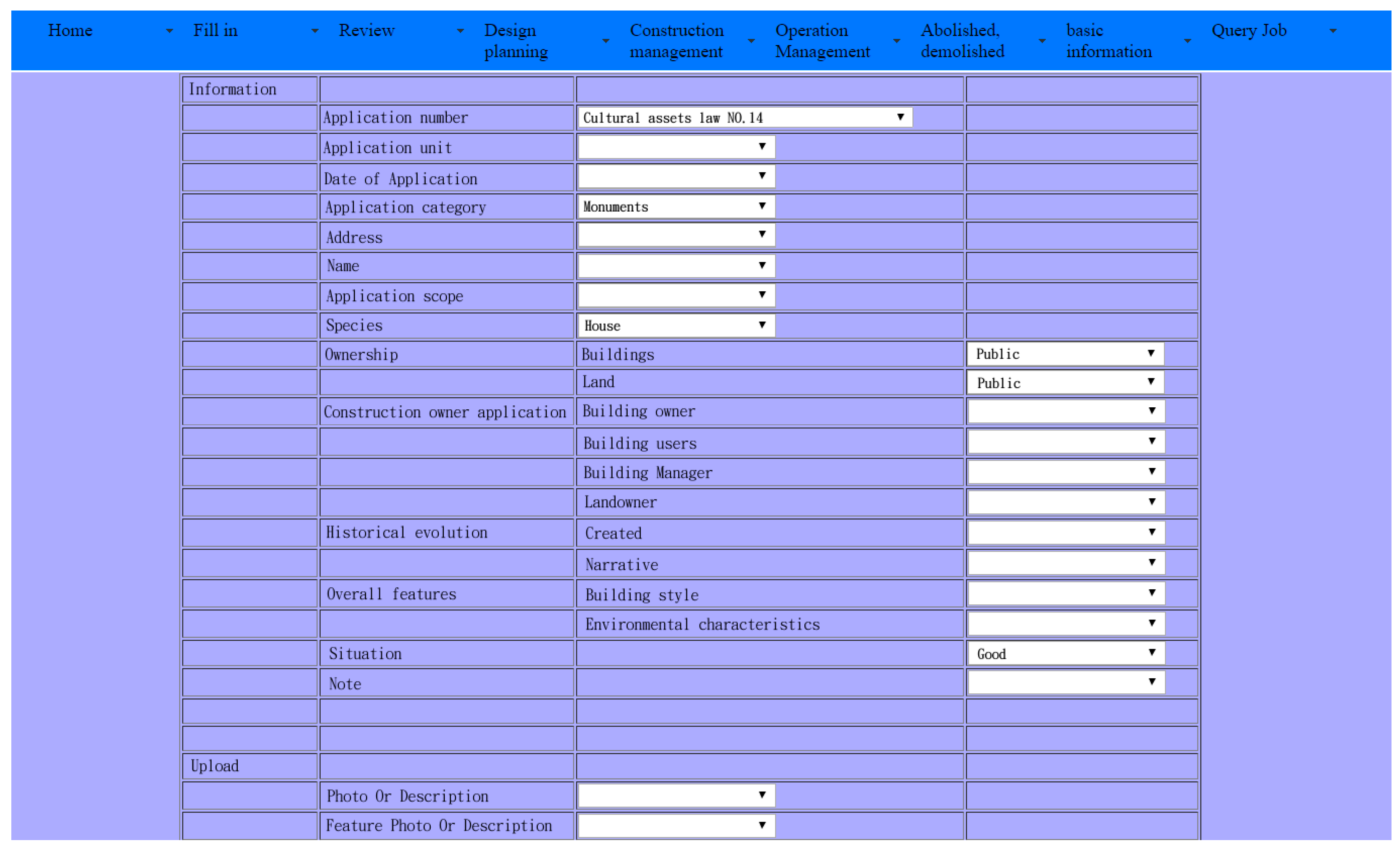


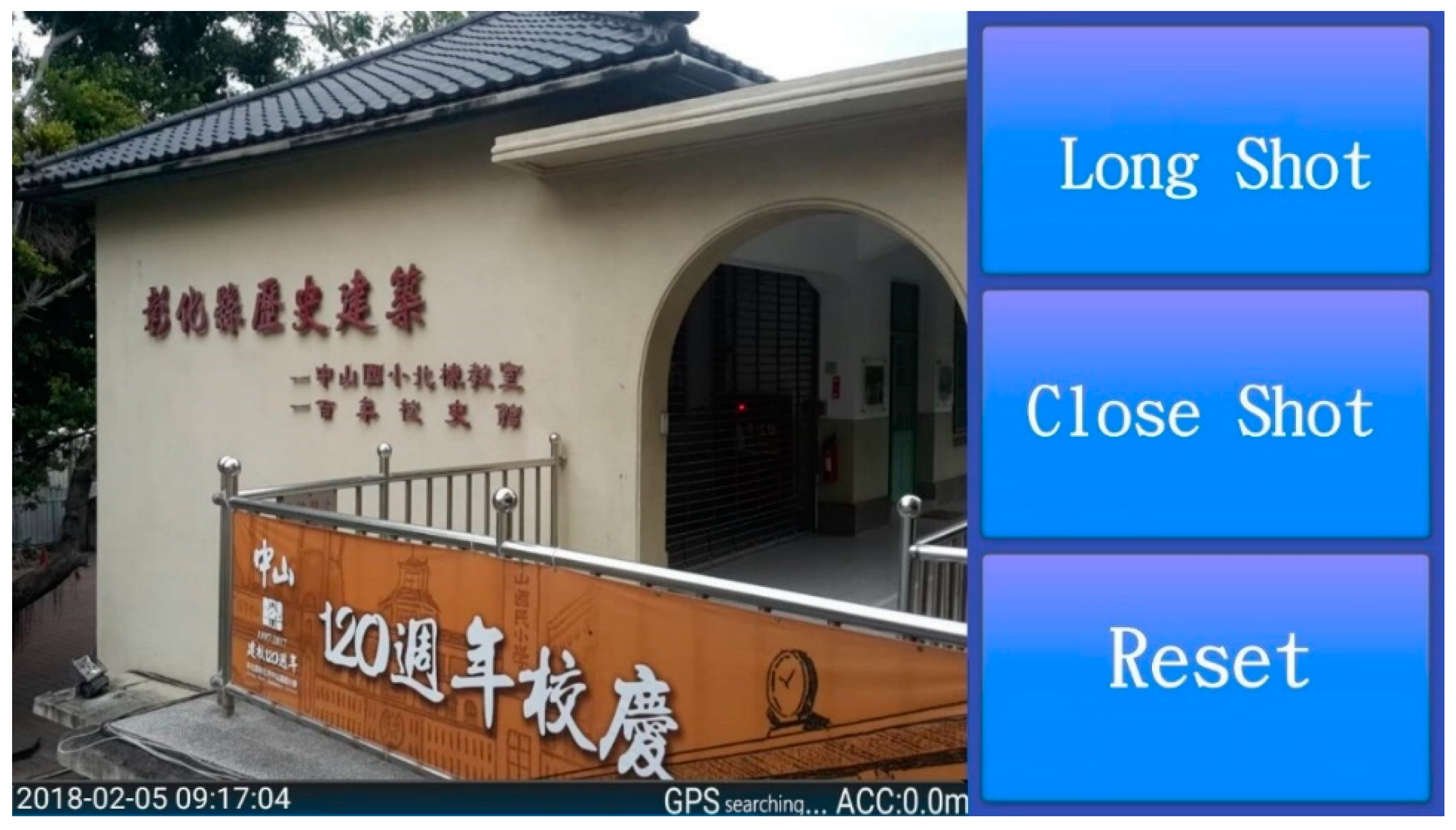

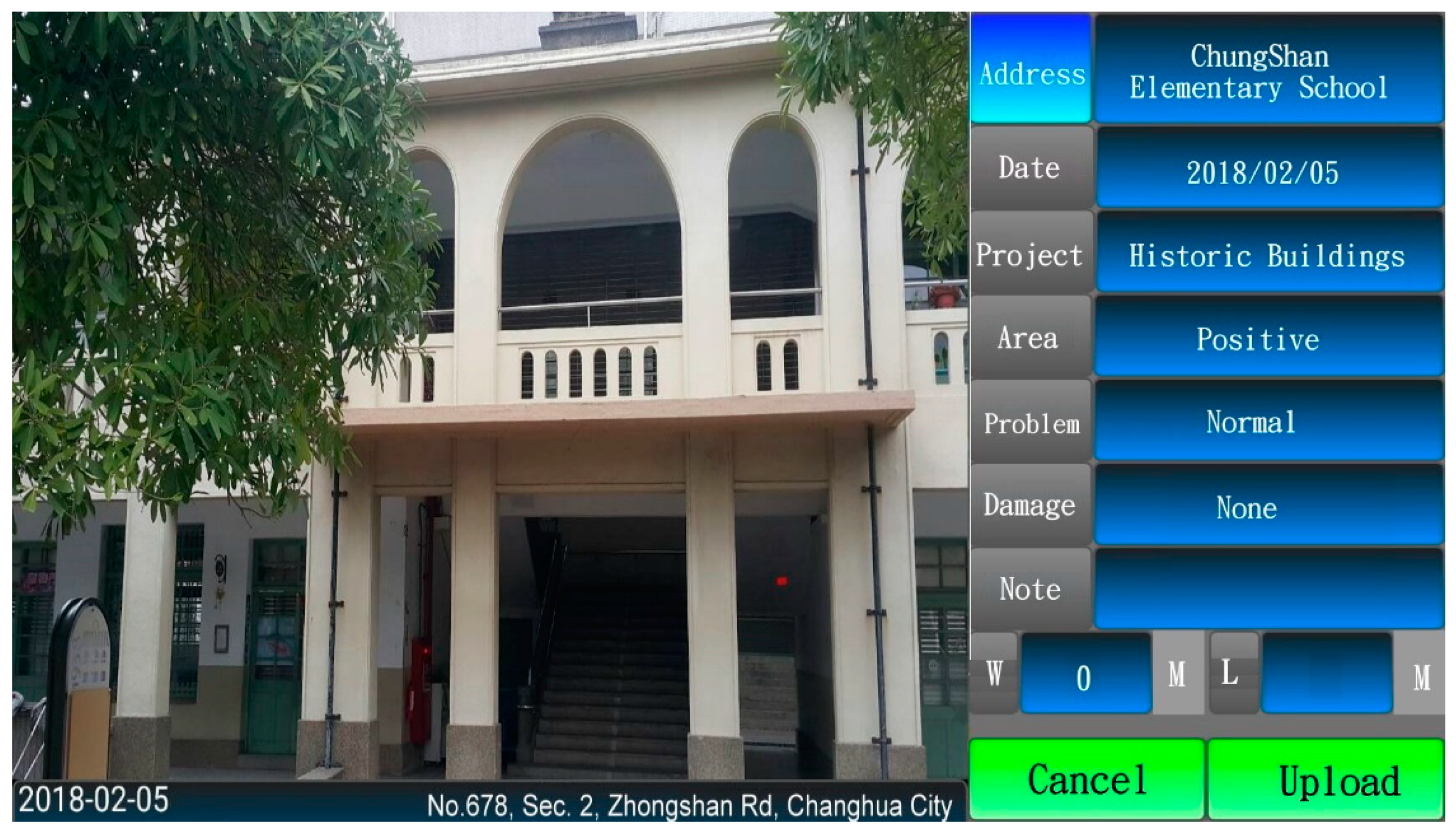
| Name | Type | Function | |
|---|---|---|---|
| 1 | Windows Explorer | File management and browsing | Browsing of management files and data |
| 2 | Music Station | Audio file management and browsing | Browsing and playing of audio files |
| 3 | Photo Station | Image file management and browsing | Browsing and displaying of image files |
| 4 | Video Station | Video file management and browsing | Browsing and playing of video files |
| 5 | Surveillance Station | Surveillance file management and browsing | Surveillance |
| 6 | WordPress | Establishment and management of blogs and websites | Establishment of websites, bulletins and application interfaces |
| 7 | Joomla | Establishment and management of blogs and websites | Establishment of websites, bulletins and application interfaces |
| 8 | phpMyAdmin | Database | Provision of digital database management tools |
| 9 | Virus protection | System protection | Regular update of virus pattern files to protect the system from virus attack |
| 10 | LimeSurvey | Digital surveying | A survey management system for surveying and analyzing various management tasks |
| 11 | QmailAgent | Email management | Quick access to contact information |
© 2018 by the authors. Licensee MDPI, Basel, Switzerland. This article is an open access article distributed under the terms and conditions of the Creative Commons Attribution (CC BY) license (http://creativecommons.org/licenses/by/4.0/).
Share and Cite
Lee, Y.-L.; Lu, M.-J.; Shiau, Y.-C. The Development of a Digital Management System for Historic Buildings in Taiwan. Arts 2018, 7, 34. https://doi.org/10.3390/arts7030034
Lee Y-L, Lu M-J, Shiau Y-C. The Development of a Digital Management System for Historic Buildings in Taiwan. Arts. 2018; 7(3):34. https://doi.org/10.3390/arts7030034
Chicago/Turabian StyleLee, Yu-Lung, Ming-Jin Lu, and Yan-Chyuan Shiau. 2018. "The Development of a Digital Management System for Historic Buildings in Taiwan" Arts 7, no. 3: 34. https://doi.org/10.3390/arts7030034




